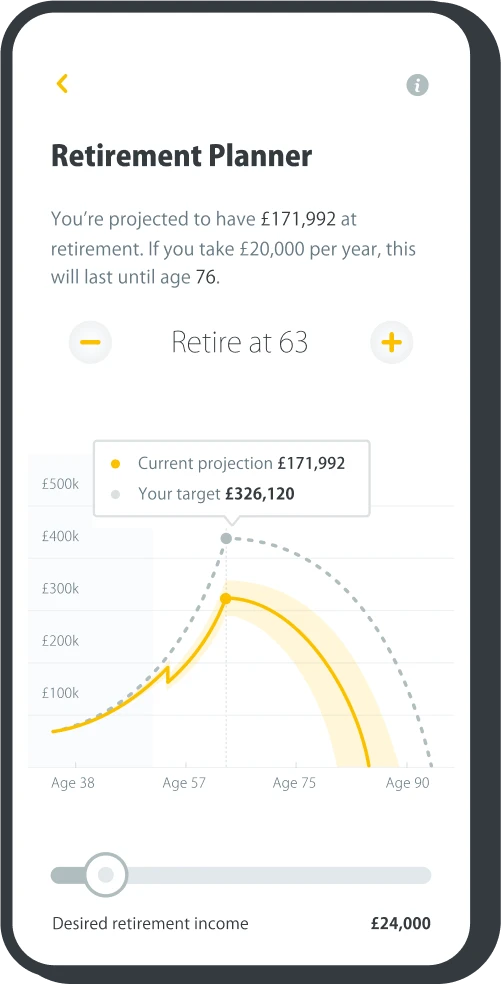Featured articles
Pension vs. Lifetime ISA
Saving for your future can sometimes feel like a daunting task, but pensions and Lifetime ISAs (LISAs) both offer smart ways to build up funds. While a LISA can be used to purchase your first home or for retirement, pensions are designed exclusively for retirement and can only be accessed after 55 (rising to 57 from 2028). Understanding how pensions and LISAs work can help you make the most of your long-term savings.
How do pensions work?
A pension is a long-term savings plan designed to support you in retirement. The most common type of pension is a defined contribution pension - which most modern personal and workplace pensions are. Defined contribution pensions help you build up money over time. Their value at retirement will depend on how much money you’ve contributed and the performance of your investments.
Here’s how it works:
- Annual contributions – you can contribute up to 100% of your salary or £60,000 (whichever is lower) into your pension pot while still receiving tax relief (2025/26).
- Tax relief – the government boosts your contributions through tax relief. Usually basic rate taxpayers get a 25% tax top up; meaning HMRC adds £25 for every £100 you pay into your pension making it £125. Higher and additional rate taxpayers can claim a further 25% and 31% respectively through their Self-Assessment tax returns.
- Investment growth – your pension savings are usually invested, and can grow over time through investment returns. Any growth in your pension is free from Income Tax and capital gains tax (CGT).
- Pensions are currently exempt from Inheritance Tax (IHT) - your pension is currently considered to sit outside of your estate, which means that when you die your beneficiaries can access your retirement savings without having to pay IHT. However, this position is set to change from April 2027.
How do LISAs work?
A LISA is a type of Individual Savings Account (ISA) designed to help people save for their first home or for retirement. It’s available to individuals aged 18 to 39, and you can continue contributing until you’re 50.
Here’s a quick rundown of how it works:
- Annual contributions - you can save up to £4,000 each tax year (2025/26) into your LISA.
- Government bonus - the government adds a 25% bonus to your contributions, up to a maximum of £1,000 per year (2025/26). This means if you save the full £4,000, you’ll receive an extra £1,000.
- Interest and investment growth - your savings will earn interest if you choose a Cash LISA, or could grow through investment returns if you opt for a Stocks and Shares LISA. With both options, your money has the opportunity to grow tax-free.
- LISAs are subject to Inheritance Tax (IHT) rules - this means that when you die, money held in your LISA can only be passed onto a spouse or civil partner tax-free. Other beneficiaries will have to pay IHT.
LISAs are particularly well-suited for:
- First-time home buyers - if you’re saving for your first home, a LISA provides a valuable boost through government bonuses.
- Young savers - individuals aged 18 to 39 can take advantage of the long-term savings potential of a LISA.
- Retirement savers - if you’re looking to supplement your pension savings, a LISA can be an excellent option. The ability to contribute until age 50 and withdraw penalty-free at age 60 makes it a versatile addition to your retirement planning.
Withdrawing money from your pension
Withdrawing money from your pension depends on your circumstances:
- Reaching retirement age – you can usually start accessing your pension from age 55 (rising to 57 in 2028). From this age, you can take up to 25% of your pension pot tax-free, with the rest taxed as income.
- Taking your whole pot – you can withdraw your entire pension as a lump sum, but anything over the 25% tax-free amount will be subject to Income Tax. This could push you into a higher tax bracket, so it’s worth considering the impact carefully.
- Other withdrawals – if you access your pension early without meeting the age requirement (other than in cases of serious ill health), you could face significant tax charges and penalties. It’s important to seek advice from an Independent Financial Adviser (IFA) before taking early withdrawals.
Withdrawing money from your LISA
Withdrawing money from your LISA depends on why you’re saving:
- Buying your first home - you can use your LISA savings to buy your first home worth up to £450,000. To do this, your LISA must be open for at least 12 months before you make a withdrawal. Read more about using a LISA to purchase your first home.
- Reaching age 60 - you can withdraw your savings tax-free without a penalty when you reach 60, making it a useful supplement to other long-term savings like a pension.
- Other withdrawals - if you need to withdraw money for reasons other than buying your first home or reaching age 60, you’ll face a 25% government charge. This is referred to as an ‘unauthorised withdrawal’ and effectively means you lose the bonus and some of your own contributions. It's best to avoid early withdrawals if possible.
Be pension confident.
Combine your old pension pots into one new online plan. It takes just a few minutes to sign up.
Get startedHow do LISAs compare to pensions?
Pension vs. LISA - which is best for you?
Ultimately, there are a lot of personal factors that will affect your decision to either open a LISA or invest in a pension. Your individual circumstances will determine which option is best for your long-term savings.
A key consideration might be whether you want to prioritise your first home or your retirement. If you’re already a homeowner, then you’d only be able to use a LISA for retirement. If this is the case, you might perhaps consider saving into a LISA alongside your pension, acting as a top-up to your income when you reach age 60.
Other financial products can impact your decision-making process. For instance, you may already have other ISA products. Although you can save into a LISA alongside other types of ISA, each individual has a savings limit of £20,000 each year (2025/26) across all of their ISAs. This includes the maximum of £4,000 per year that you can pay into your LISA.
Risk warning
As always with investments, your capital is at risk. The value of your investment can go down as well as up, and you may get back less than you invest. This information should not be regarded as financial advice.
Last edited: 07-07-2025







